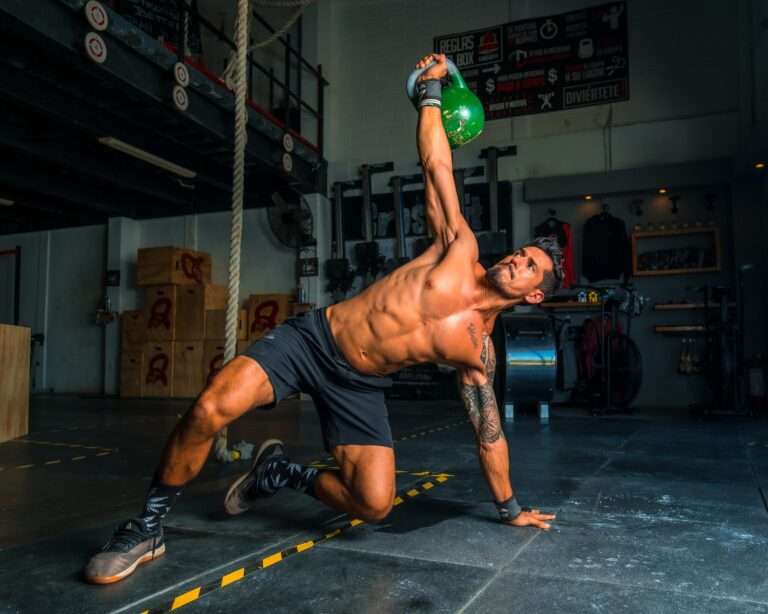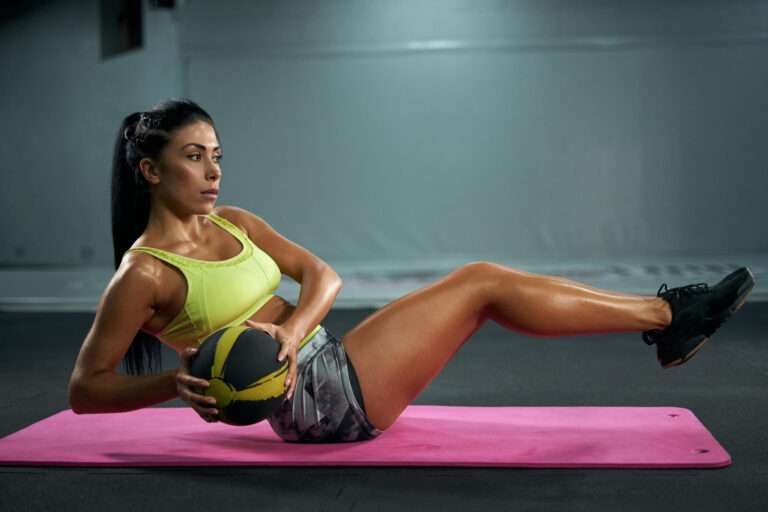A Complete Muscle Up Progression Guide

The muscle-up, which combines a pull-up and a dip into one seamless motion, is the advanced form of bodyweight strength and gymnastic movements. It involves coordination and technique in along with strength. Learning how to perform the muscle-up can be extremely satisfying, whether you’re an aspiring gymnast, a calisthenics athelet, or you just want to add a difficult exercise to your list of exercises. In this post, we’ll walk you through a progression in detail, go through the muscles involved, analyze ring muscle-ups, and breakdown the key techniques.
Understanding the Muscle-Up
Let’s first clarify a muscle-up so that we can better understand the progression and techniques. A muscle-up is a compound exercise that includes pulling yourself out of a hanging posture and then pushing to the top of the equipment, which is usually a pull-up bar or a set of gymnastic rings. It’s a powerful example of coordination, core stability, and upper body strength.
Muscles Worked During a Muscle-Up
Several muscle groups work in synergy to perform a muscle-up. These include:
- Lats (Latissimus Dorsi): These are the large muscles of the back responsible for the pulling motion during the initial part of the muscle-up.
- Biceps and Brachialis: These muscles in the front of the upper arm assist in the pulling phase.
- Triceps: These muscles on the back of the upper arm come into play during the transition from pull-up to dip.
- Chest (Pectorals): The chest muscles are heavily engaged during the transition into the dip.
- Shoulders (Deltoids): Both the front and lateral deltoid muscles are used throughout the movement for stabilization and control.
- Core Muscles: The core plays a vital role in maintaining stability and preventing excessive swinging during the movement.
Muscle-Up Progression
Mastering the muscle-up requires a gradual progression that focuses on building the necessary strength and technique. Here’s a step-by-step guide to help you achieve this challenging movement:
1. Building Up Your Basic Strength:
Before attempting a muscle-up, ensure you have a solid foundation of strength. Focus on pull-ups and dips, as these are the fundamental components of the muscle-up. Aim to perform at least 10-15 consecutive pull-ups and dips.
Pull-up – 10 Reps × 3 Sets
Body Row – 8 Reps × 3 Sets
Dip – 10 Reps × 3 Sets
Push-up – 12 Reps × 3 Sets
Also read: How to do L sit
2. Perfect Pull-Ups and Dips
Refine your pull-up and dip techniques. A controlled and efficient pull-up is essential for the initial part of the muscle-up. Work on achieving a full range of motion and proper form for both exercises. When you able to do 10 high quality of pull ups your next exercises would be:
High Pull-up – 8 Reps × 3 Sets
Pull-up – 7 Reps × 3 Sets
Straight Bar Dip – 8 Reps × 3 Sets
Push-up – 15 Reps × 3 Sets
3. Develop Explosive Pulling Power
To bridge the gap between pull-ups and muscle-ups, focus on explosive pulling exercises. Exercises like explosive pull-ups, pull-up claps, and chest-to-bar pull-ups can help you develop the power required for the transition. Move to following exercise to increase explosive strength:
Explosive Pull-ups – 8 Reps × 3 Sets
High Pull-ups 10 Reps × 3 Sets
Straight Bar Dips – 8 Reps × 3 Sets
Dips – 10 Reps × 3 Sets
4. Transition Exercises
A jumping muscle-up is an intermediate calisthenics exercise that serves as a progression toward achieving a full muscle-up. This exercise involves using a combination of explosive pull-up and dip movements to transition from hanging below the bar to the top of the bar. Here’s a brief overview:
Jumping Muscle Up – 10 Reps × 3 Sets
High Pull-up – 3 Reps × 3 Sets
Pull-up – 5 Reps × 3 Sets
Straight Bar Dip – 7 Reps × 3 Sets
Also Read: How to learn planche
5. Negatives and Eccentric Training
Negatives and eccentric training are specialized techniques in strength training that focus on the lowering phase of an exercise. These methods emphasize muscle contractions during lengthening (stretching) movements, providing unique benefits for muscle development and strength gains.
Negative Muscle Up – 6 Reps × 3 Sets
High Pull-up – 7 Reps × 3 Sets
Negative Muscle Up – 5 Reps × 3 Sets
Straight Bar Dip – 8 Reps × 3 Sets
6. Assisted Muscle-Ups
Muscle-ups with assistance are used as a precursor to full muscle-ups. They assist by providing a slight boost during the challenging portion of the movement. To make things easier you may use bands or a partner. In this way, strength and skill are gradually increased. You’ll require less assistance as you progress until you can perform a muscle-up by yourself. Just keep in mind to start small, practice frequently and you’ll succeed!
Muscle Up – 10 Reps × 3 Sets
Kipping Muscle Up – 4 Reps × 3 Sets
Pull-up – 8 Reps × 3 Sets
Straight Bar Dip – 10 Reps × 3 Sets
7. Ring Muscle-Up
Try making the switch to ring muscle-ups if you want to advance your muscle-up skills. Rings cause instability, requiring even more control and stability. Ring muscle-up progressions follow a similar pattern to bar muscle-up progressions, with a focus on ring support holds and ring dips.
Because the rings are unstable, ring muscle-ups add another layer of challenge. Here is a quick description of the technique:
- Ring Support Holds: Practice ring support holds to increase stability. Hold the rings while keeping your body straight and your arms fully extended.
- Ring Pull-Up: Pull-ups on rings should be performed with a focus on stability and control throughout the movement.
- Ring Transition: Practice the transition from pull-up to dip on the rings. This involves a dynamic motion that requires coordination and control.
- Ring Dip: Complete the muscle-up by pushing up into a dip position on the rings. Focus on stability and control as you lock out your elbows.
Technique Breakdown for Bar Muscle-Up
Here’s a detailed breakdown of the technique for executing a bar muscle-up:
- Grip: Start with a false grip (wrists over the bar) to help a smoother transition. Your hands should be slightly wider than shoulder-width apart.
- Initial Pull: Initiate the movement with a strong pull-up. As you near the top of the pull-up, start leaning back, bringing your chest towards the bar.
- Transition: At the peak of your pull-up, shift your focus from pulling up to pulling your chest over the bar. Imagine pushing the bar down while simultaneously pulling your elbows down towards your hips.
- Dip Transition: Once your chest is above the bar, lean forward and start pushing down on the bar. This will allow you to transition smoothly into the dip phase.
- Dip: Complete the movement by pushing yourself up into a dip position. Straighten your arms and lock out your elbows at the top.
Conclusion
The muscle-up is a challenging yet honoring exercise that demonstrates strength and agility. You can achieve this amazing accomplishment by following to a set progression, paying attention to technique, and setting sufficient time to develop the necessary strength. Whatever your goal—the traditional bar muscle-up or the more difficult ring muscle-ups—consistent practice and commitment will surely help you succeed. To succeed in learning the muscle-up, keep in mind that persistence as well as patience are needed.
FAQs
1. What Muscles Does a Muscle-Up Work?
A muscle-up is a compound exercise that engages several muscle groups. The primary muscles worked during a muscle-up include the latissimus dorsi (back), biceps, triceps, chest, shoulders, and core muscles.
2. How Can I Progress Toward a Muscle-Up If I Can’t Do One Yet?
If you can’t perform a muscle-up yet, start by building the foundational strength with pull-ups and dips. Gradually progress through exercises like explosive pull-ups, negatives, and assisted muscle-ups to develop the required strength and technique.
3. What’s the Difference Between a Bar Muscle-Up and a Ring Muscle-Up?
The main difference between a bar muscle-up and a ring muscle-up is the apparatus used. Bar muscle-ups are performed on a horizontal bar, while ring muscle-ups are done on gymnastic rings. Ring muscle-ups require more stability and control due to the instability of the rings.
4. Are Muscle-Ups Suitable for Beginners?
Muscle-ups are an advanced bodyweight exercise and may not be suitable for beginners. It’s essential to establish a strong foundation of strength and proper technique with exercises like pull-ups and dips before attempting muscle-ups.
5. How Can I Avoid Common Mistakes When Learning Muscle-Ups?
To avoid common mistakes, focus on controlled movements instead of relying on momentum, and follow a structured progression. Avoid skipping steps in the progression and prioritize core strength to maintain stability during the movement.
6. Can Women Also Learn to Perform Muscle-Ups?
Yes, women can absolutely learn to perform muscle-ups. While it’s true that men generally have more upper body muscle mass, women can still develop the strength and technique required to execute a muscle-up. The progression and techniques are the same for both genders, with adjustments made based on individual fitness levels.






